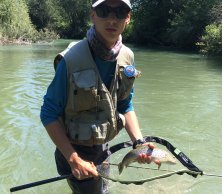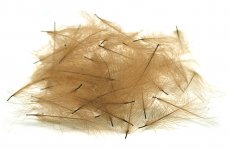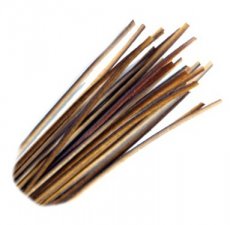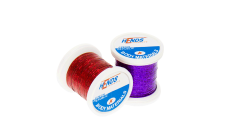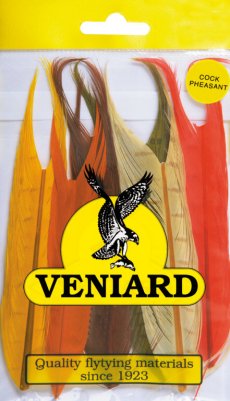An overview of the fly tying materials that are needed to tying an effective flies for modern European nymphing.
How to choose the best nymphing hooks you could read in the article "Top 5 Fly Hooks for Euro Nymphing Patterns", in the following lines I will focus on the fly tying materials themselves. Tying of effective nymphs for euro nymphing is not too complicated even for beginner fly tiers and I definitely recommend tying nymphs for your fly tying beginnings. Let's take a look at the main materials for tying modern nymph patterns together.
FEATHER
Cul de Canard - CDC
CDC feathers are the most important tying material of modern dry flies mainly because of their excellent floating abilities, but the use of CDC feathers is also for tying other types of flies. CDC twigs themselves are very fine and work very well under water, they also bind air and create air bubbles in the fly, which makes the fly more attractive to fish. When tying nymphs, therefore, I usually add the twigs of CDC feathers.
Coq de Leon
The feathers of the Coq de Leon are the best choice for making tails, due to its irreplaceable shiny glassy structure that even real aquatic insect tails have. You can use a classic cock, hen or partridge feather as a substitute, but the feather structure will never look as natural as the feather of Leon.
Pheasant and peacock feathers
The tail feathers of peacock and pheasant have become a real fly tying classic, which is irreplaceable for many patterns of dry and wet flies. You can not do without these fly tying materials even in the production of modern nymphs. Peacock feathers are the right choice for the creation of red tags and orange tags. Pheasant tail feather cannot be missed when tying Pheasant Tail Nymphs. Both of these materials are mostly used in natural colors, but of course creativity has no limits and you can use a variety of color variations of both types of feathers.
THREADS, TINSELS AND WIRE
Only a few patterns of modern nymphs can do without a color trigger in the form of a tips, ribbing, or header. These triggers are intended to irritate the fish for strike, and colorful tying threads are simply indispensable. I like to use yarns that react to UV light to which the fish react. These include some threads from Hends, Tommi Fly or Veniard (e.g. Hends Neon Thread, Tommi Fly UV Thread, Veniard Glo-Brite or UNI Neon Floss) The threads of orange, red, yellow and green are the most important for me.
We can also make colored tags from Angel Hair or Spectra Dubbing material. Another interesting and in some shades indispensable material for ribbing the fly bodies is Hends Pearl Quill, which has a special shine. Most of all I like blue shades, which are often a real weapon when fishing for salmonids and coarse fish.
Red holographic tinsel
The red holographic tinsel is a great material for tying the tip to a verified fly pattern named Sirupčík (which is very popular fly in our country). After tying the tip, I recommend to lightly varnish to increase the durability of this part of the fly.
Colored wires
I use the wires for ribbing the bodies of flies, which makes the whole fly firmer and increase its life and, in addition, a colored wire will highlight the fly. We do not need to make too many turns around the body, it is enough just a few turns (4-5). Another possibility may be to tie the whole body of the nymph only with the use of colored wire. In my fly tyting I consider the wires in silver, gold, copper and red color the most important ones.
DUBBINGS
Natural hare and rabbit dubbing
Hare dubbing or rabbit dubbing is another important material for tying nymph bodies, whether for natural Hare Ear variations or in color shades on other nymph patterns. I like to use natural hare colors (brown, gray) or I make dubbing directly from hare mask. And I can not do without rabbit dubbing in black and olive colors.
Spectra Dubbing
Synthetic high-iridiscent dubbing is an important fly tying material for nymph headers/collars. Both natural and distinctive colors can be used to create an effective trigger. I also add Spectra dubbing to natural dubbings if I want to create a pattern that is less distinctive but at the same time attractive.
Your fly tying materials must definitely include Spectra Dubbing in shades 45 and 46, which can also be used on fly bodies as a replacement for peacock feathers. I also like to revive flies with blue shades of Spectra Dubbing.
So much about basic materials for tying modern nymph patterns. As you can see, the choice of materials is quite simple, but you can still make dozens of effective flies. If you use all the color combinations, then the number of patterns can be even higher, and not to mention other options if you add different colors of tungsten beads.
Have a nice time at the vice!







